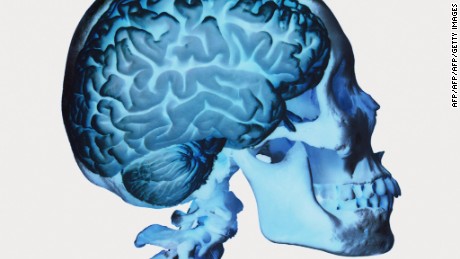A lack of access to high-quality education at an early age; being overweight during early adulthood; or having high blood pressure, diabetes and two or more heart health risk factors in the teen years, 20s and midlife were significantly connected to cognitive issues and dementia in later life, according to the new research.
All of those risk factors are most likely to impact low-income people of color, said Maria Carrillo, the chief science officer for the Alzheimer’s Association.
“We’ve known for quite a while that African Americans are two times more likely, and Latinos are one and a half times more likely than their White counterparts to have Alzheimer’s or related dementia,” she told CNN.
“But what we found in these studies is that having those risks in adolescence means they actually stay with you over time,” she continued.
“That’s an important thing to highlight, especially right now, when we are thinking about those comorbidities (risk factors) that people who are most impacted by the Covid-19 virus seem to have.”
Obesity and disease in youth
Two of the studies explored the impact in the teens and 20s on the risk of later dementia for people with a higher body-mass index (BMI) or heart diseases risk factors.
One analyzed data on over 700 African Americans in adolescence, young adulthood and midlife and found having heart-related conditions such as high blood pressure and diabetes was associated with significantly worse late-life cognition. That held true even after adjusting for age, gender and education.
From adolescence through adulthood, African Americans typically have a higher risk of cardiovascular disease risk factors compared to other racial and ethnic groups. So instead of targeting risk factors in the Black community in midlife, preventative interventions need to begin in adolescence, the study said.
A second study analyzed the impact of body mass index (BMI) at the age of 20 on the risk for later-life dementia for over 5,000 men and women participating in two national longitudinal studies.
In women, being overweight (having a BMI of 25 or more) at age 20 raised the risk of dementia by 1.8 times. When body weight climbed to 30 BMI or more, which is clinically obese, the risk rose 2.5 times higher compared to 20-year-old women with normal weight.
There was no association between higher BMI and dementia risk among women in midlife, suggesting that being overweight at younger ages must play a role.
For men, being obese at age 20 raised the risk for dementia by 2.5 times. Men who were merely overweight in midlife had a 1.5 times higher risk, but it rose to 2 times if the man was obese.
For both sexes, risk of dementia was greater in later life, which makes sense, since age itself is a primary risk factor.
“It’s very rare to find a study that follows individuals across early adolescence to middle age, and then as seniors,” Carillo said. “So that’s really why we wanted to highlight this. We also want to think about how we counteract this trend, because these are behaviors that are modifiable.”
Early education
Washington Heights/Inwood Columbia Aging Project.
It’s a long-term, community-based study of dementia that followed nearly 6,000 elderly people up to 25 years. The study tracked variables such as school term length, student-teacher ratio, mandatory school enrollment age, minimum dropout age and student attendance.
The analysis found Black men and women who attended school in states with lower quality educational standards experience a more rapid decline in memory and language in later life.
On the flip side, going to higher-quality schools as a child was associated with better language and memory performance, and lower risk of dementia in older age. Carillo said that’s because higher education creates a sort of “cognitive reserve” that helps the brain keep memory loss and other symptoms at bay longer than someone with less access to education.
“Imagine you have a tree with amazing branches and complex leaf structures and a storm comes by and blows really hard,” Carillo said. “It will lose less leaves and branches. It’ll still stay full.
“And that’s exactly what our brain is — just this amazing architecture of nervous tissue and connections,” she said. “The more you learn, the more connections you have and the more you can afford to lose a little and get trimmed, or pruned as we age.”
Low-income families of color may live in areas with few high-quality schools. Parents are unable to afford to send their child to stimulating day care or after-school programs, and they may not have the time or resources to enrich the child’s life at home with books, music, art or other educational experiences.
In addition, food deserts are common, health insurance is expensive and public health care is spotty, often handicapping a child’s nutritional needs as well.
“I’m Mexican American. I grew up in Chicago, inner city, with parents who did not speak English,” Carillo said. “I’m glad I had that experience, but I also can tell you that those social determinants of health are really meaningful in our communities.
“Not having access to good health care, not having access to information about healthier foods or choices that we make is something that is very real,” she said.
And finally there’s the impact of violence, both at home and within the community, as well as growing realization by scientists that racism, in and of itself, can contribute to stress and negatively impact a child’s brain and body.
“We know that stress in particular is very closely connected to challenges with cognition and increases in the risk of dementia,” Carillo said.
What can be done? Carillo acknowledged that families may not be able to control the neighborhood their children were born in, their race, socioeconomic status or genetics, but there are actions to take.
“What you can actually look at is making sure kids stay in school, making sure they finish high school,” Carillo said, adding that you can also teach children to remain active and constantly challenged to learn new things throughout life, even in their golden years of retirement.
“That cognitive reserve is so critical,” she said. “It’s never too early, or too late, to take action to protect your memory and thinking abilities.”





